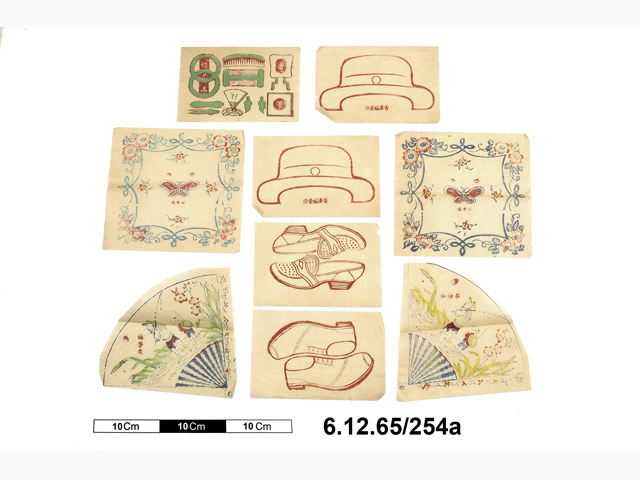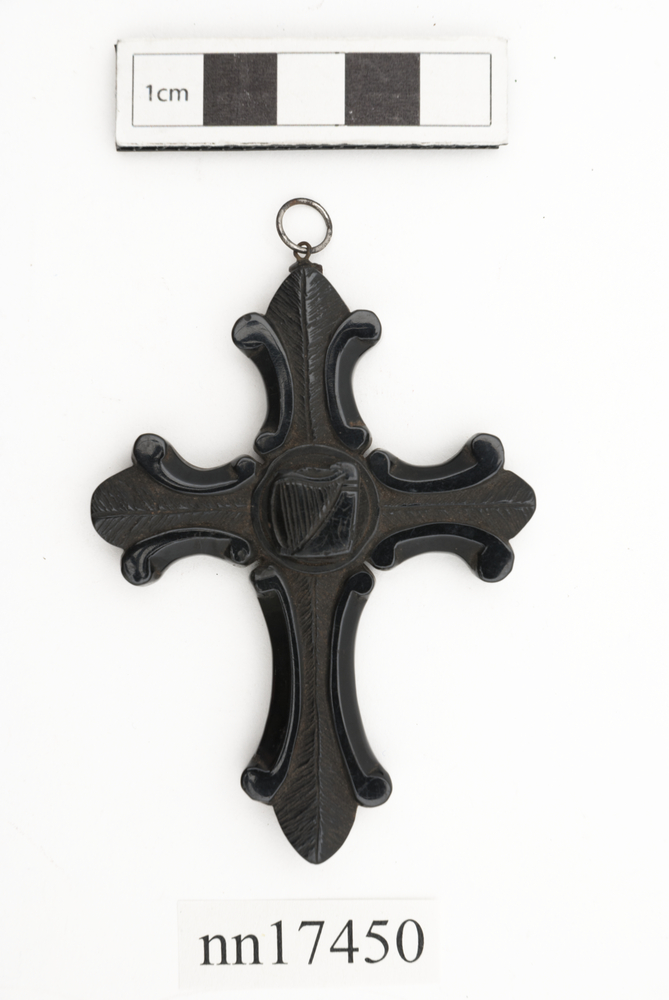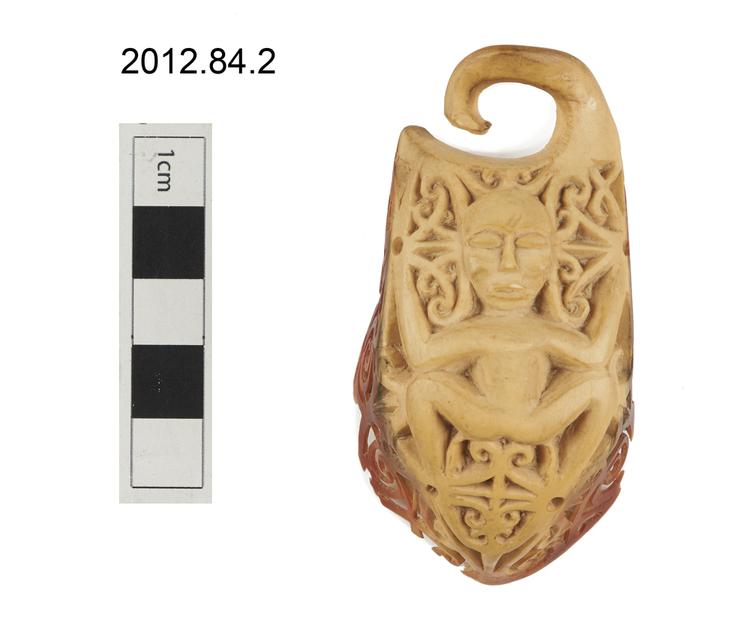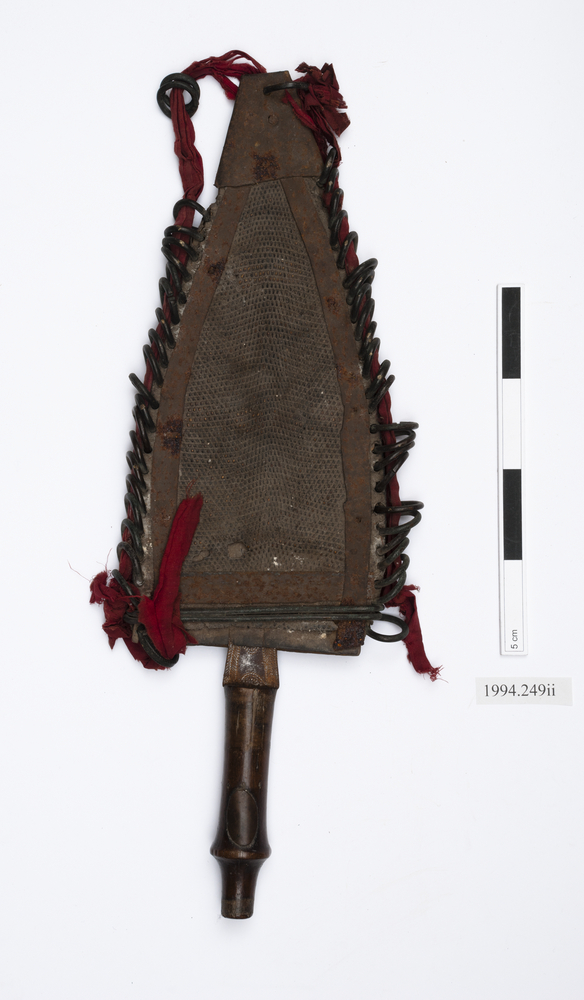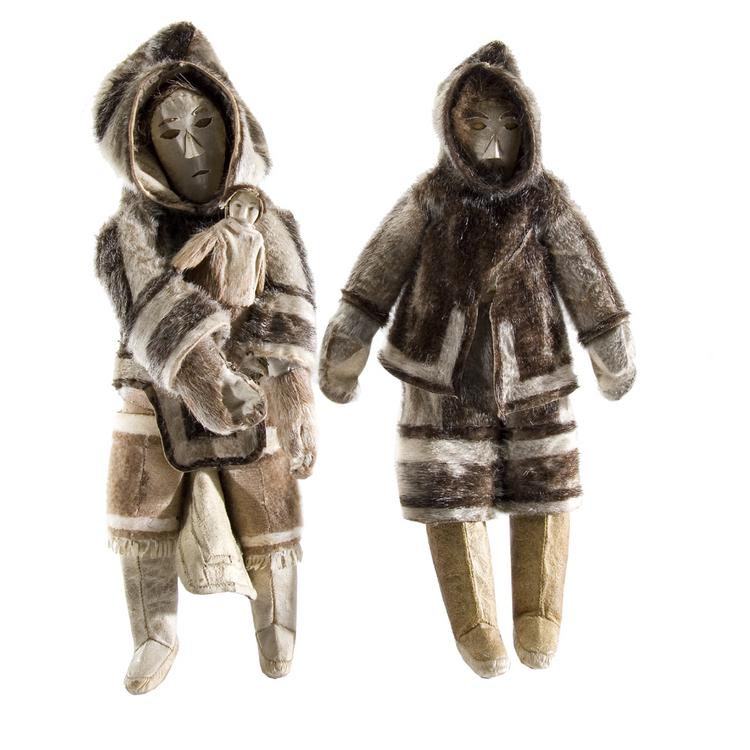
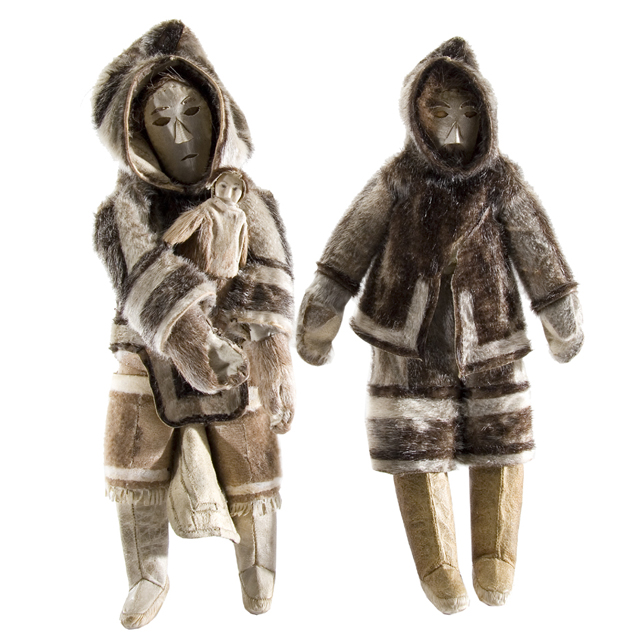
Pair of dolls representing an Inuit man and woman. The woman carries a baby in her arms. Each figure wears a hooded sealskin jacket and trousers, and leather boots.
Inuit is used as a name for indigenous peoples who live within the arctic circle, and were previously called Eskimos. The term Eskimo was not chosen by the Inuit themselves, most of whom now prefer to be known as Inuit, but there is still no total agreement on their name. Inuits live in Canada, Alaska, and Greenland and so have different nationalities. Although they share a common culture, few of them now live a completely traditional lifestyle. In the past they were living in very isolated places and so they had to be totally self sufficient, relying on land and sea animals, driftwood, and soapstone to provide all their needs. When an animal was killed, every part of it was used: the flesh was eaten, the bones used to make sewing needles, animal sinew was used for thread, and the skins used to make blankets, clothing, and footwear. Walrus ivory was particularly important to make knives. These dolls are wearing typical traditional Inuit adult clothing and the woman is carrying a baby carved from bone. Both men and women wore Parka (anorak) jackets made from animal skin, but the woman's jacket, called 'Amouti', is longer, with flaps at the front and back. The woman's jacket also differed from the man's because it had a larger hood to protect the baby, carried on her back, against the cold wind. Boots, called Kamik, were made from dressed skin, which means that all the fur had been scraped off. At the coldest time of year Inuits wore two layers of clothing. The inside layer was worn with the fur against their skin and the outer layer with the fur on the outside, this also included their boots and mittens.



